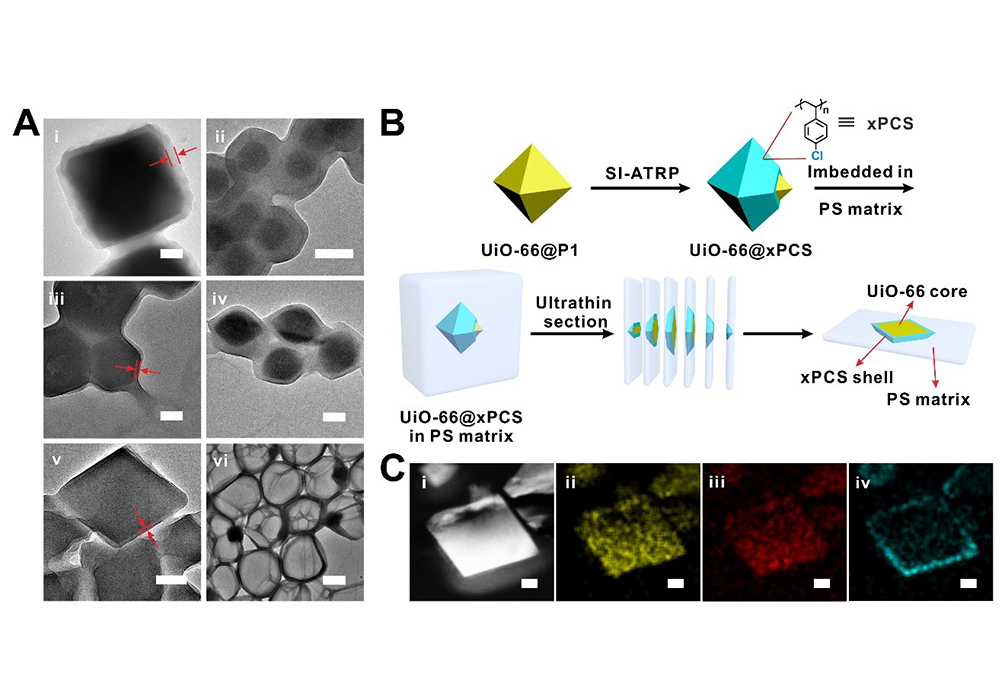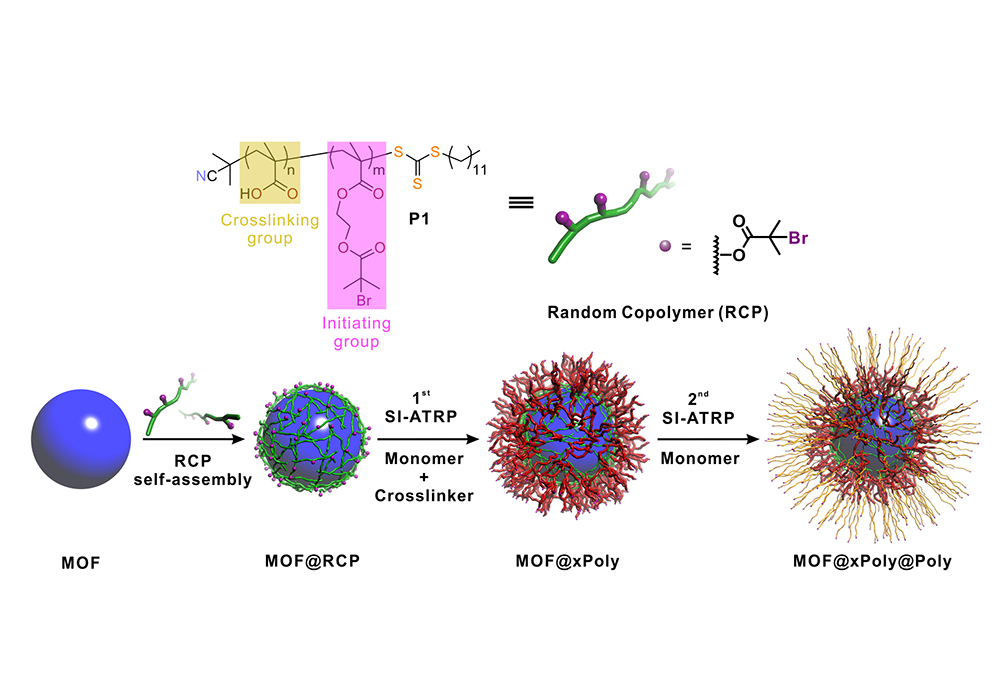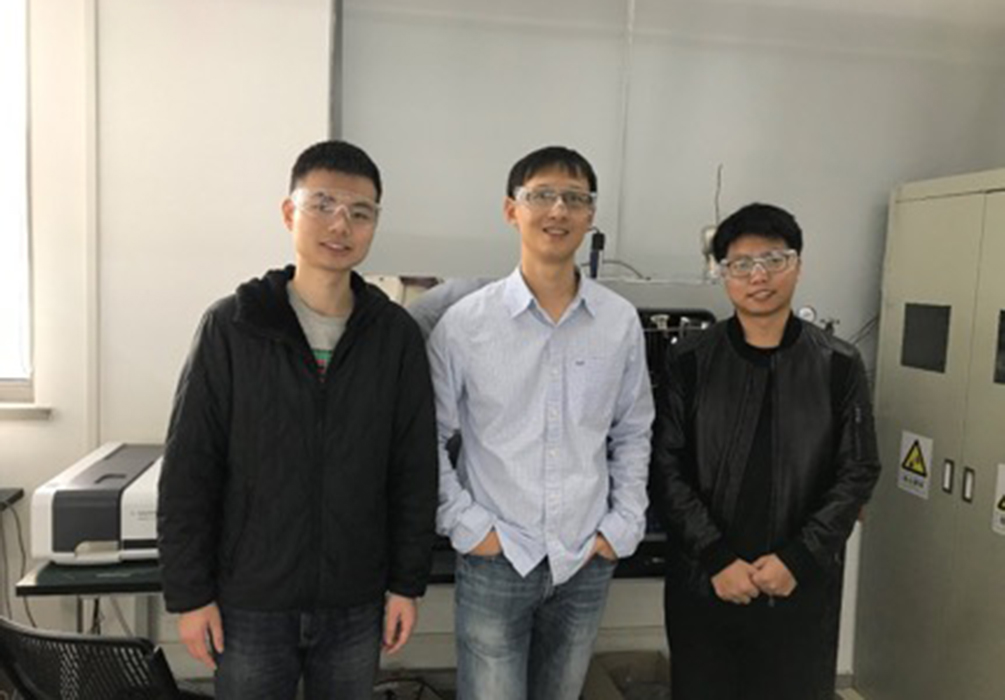Recently, Assistant Professor Li Tao’s research group from School of Physical Science and Technology (SPST) reported a generalizable approach to construct MOF@polymer functional composites through surface-initiated atom transfer radical polymerization (SI-ATRP) in Chemical Science, the flagship journal of the Royal Society of Chemistry (RSC).
Grafting polymers onto nanoparticle (NP) surfaces is a common way to control the physical and chemical properties of NPs. Benefiting from the rich chemistry and physical behaviors of polymers, a number of properties of nanomaterials such as dispersibility, chemical stability, charge transport behavior, self-assembly behavior, molecular recognition, mechanical properties etc. can be precisely controlled by tuning the composition, morphology, and chain conformation of the polymer shell. Generally, most nanomaterials such as metal nanoparticles, quantum dots, protein, oxide nanoparticles and macromolecules can be surface-modified by covalent grafting.
Metal organic frameworks (MOFs), an interesting type of porous materials, are formed by the coordination of metal ions or clusters and organic linkers with extremely rich structure and chemical composition diversity. Such materials have potential applications in many fields such as gas storage, gas separation, catalysis, and bio-imaging etc. More than 20,000 different MOFs have been reported within the past 20 years. MOF NPs, like other nanomaterials, often benefit from “soft” polymeric coatings with the resultant MOF@polymer composites exhibiting unique performance in bio-imaging, therapeutics, membrane gas separation, catalysis etc. However, there is a lack of a generalizable method can be applied to different types of MOFs and most reported methods are usually limited to specific MOFs systems.
To overcome current challenges, Li Tao's research group developed a surface-initiated atom transfer radical polymerization (SI-ATRP) method for the growth of polymers on various MOFs materials’ surface, which is based on the self-assembly of a designed random copolymer (RCP) on the surface via weak interaction. In this research, they first designed an RCP containing multiple carboxylic acid groups and initiation sites (bromoisobutyrate, BiB) of ATRP along the polymer chain. Then this RCP was self-assembled onto MOF surfaces through inter-chain hydrogen bond crosslinking accompanied by weak MOF/polymer interactions to immobilize the initiation site on MOF surface. The SI-ATRP was performed subsequently in the presence of monomer and crosslinking monomer, and a layer of covalently crosslinked polymer with uniform thickness can be coated on the surface of MOF. Utilizing the reversible-deactivation feature of ATRP, a second and even a third layer of polymer (linear or crosslinked) can be subsequently grown from the first layer, thus the composition, sequence and architecture of polymer layer on the surface of MOFs can be controlled arbitrarily. This method solves the long-standing problem of MOFs surface modification with polymers and makes the accurate synthesis and interface regulation of MOF and polymer composites possible.
All the work was done at ShanghaiTech University. Graduate student He Sanfeng from Li Tao’s research group is the first author, and the corresponding author is Dr. Li Tao. The molecular dynamics simulation (MD simulation) experiment in this research was completed by Assistant Professor Yongjin Lee from SPST, and the energy dispersive X-ray spectrum (EDS) was completed with the help of Assistant Professor Yu Yi from SPST, demonstrating the collaborative culture at SPST.
Read more at: https://pubs.rsc.org/en/content/articlelanding/2019/sc/c8sc03520b#!divAbstract

Figure 1. Schematic illustration of typical experimental procedures for growing polymer shells on a MOF particle

Figure 2. TEM images of different MOF@polymer samples and EDS elemental mapping images

From left to right: He Sanfeng (first author), Professor Li Tao, Wang Hongliang (second author)

